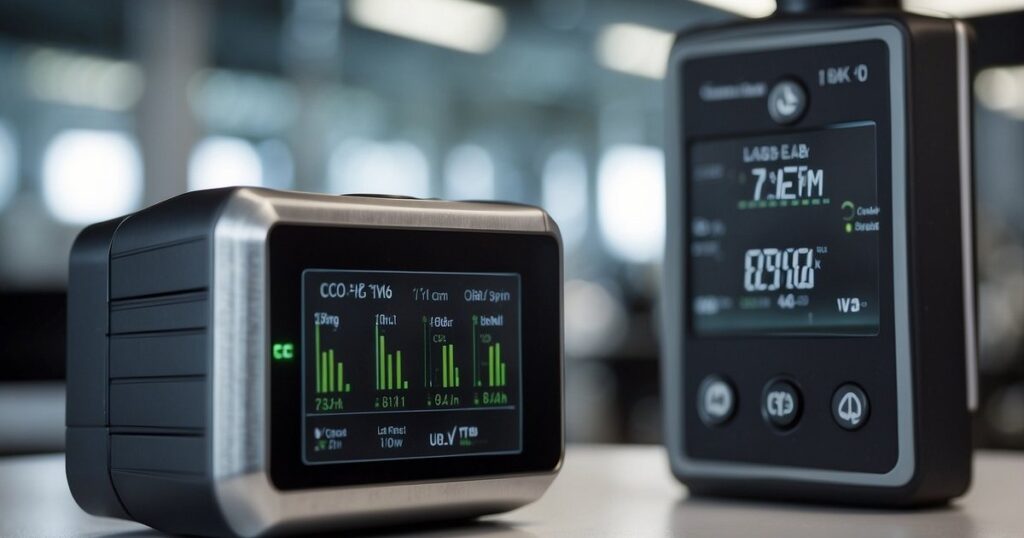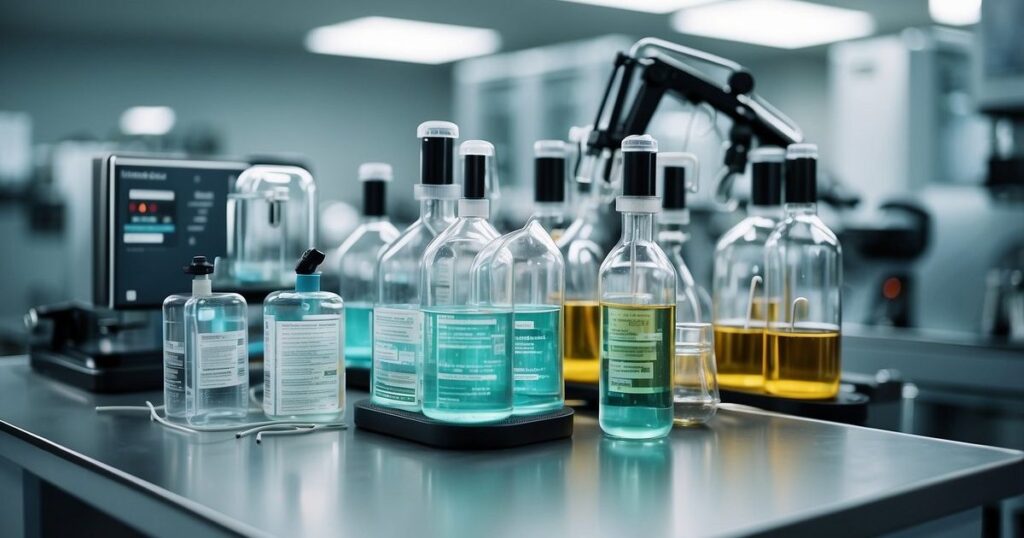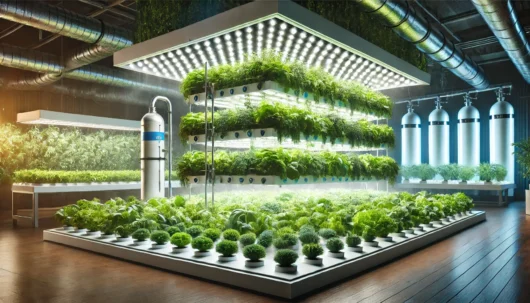In the food and beverage industry, carbon dioxide (CO2) plays a crucial role as a preservative and is vital in the carbonation process of soft drinks and beer. Therefore, ensuring the purity and quality of CO2 is imperative to protect consumer health and maintain product integrity. CO2 quality control is a systematic approach incorporating several measures to achieve consistent quality and meet or exceed industry standards.
As a key part of quality assurance, CO2 used in consumables must be free of contaminants. This is achieved through stringent monitoring using sophisticated equipment like mass spectrometers, which can detect impurities at very low levels. Adherence to the guidelines set by industry authorities, such as the European Industrial Gases Association (EIGA) and the International Society of Beverage Technologists (ISBT), ensures that every batch of CO2 matches the quality requirements essential for food and beverage safety.
Moreover, maintaining indoor air quality is another aspect where CO2 quality control is essential. High levels of CO2 can have harmful health effects, necessitating accurate measurement and regulation. In spaces where CO2 is produced or used, it is important that CO2 detectors are routinely calibrated and that air quality is regularly assessed to ensure safety and conformity with occupational health standards.
Monitoring and Regulation of CO2 Levels

Understanding carbon dioxide (CO2) regulation in various environments is pivotal for ensuring safety and comfort. This entails adhering to established exposure limits, maintaining optimal ventilation, recognising the health effects of CO2, and implementing effective management strategies.
Standards and Recommended Exposure Limits
The Occupational Safety and Health Administration (OSHA) sets an exposure limit for CO2 at 5,000 parts per million (ppm) over an 8-hour workday. Meanwhile, ASHRAE Standard 62.1 is often referenced for maintaining indoor air quality (IAQ), suggesting a CO2 concentration no greater than 700 ppm above outdoor ambient levels to sustain occupant comfort and health.
Ventilation and Air Quality Control
Adequate ventilation is key to controlling CO2 levels indoors. Both natural ventilation, such as opening windows, and mechanical ventilation systems, like range hoods and exhaust fans, contribute to removing excess CO2 and introducing fresh air. The Department of Energy (DOE) and ASHRAE provide guidelines for designing ventilation systems that achieve this balance.
Effects of CO2 on Health and Comfort
Elevated CO2 levels can cause adverse health effects such as tiredness, headaches, dizziness, eye irritation, dry throat, and coughing. Monitoring indoor CO2 is crucial for the early detection of poor air quality, enabling prompt ventilation adjustments to enhance comfort and safety.
Ventilation Strategies for Effective CO2 Management
To ensure CO2 levels remain within safe limits, implement a CO2 Quality Control regimen that:
- Regularly checks CO2 monitors to ensure they are accurately measuring air quality.
- Employs quality assurance practices to maintain industry standards in your CO2 systems.
- Consider installing CO2 sensors away from direct ventilation paths or areas of low air circulation.
By understanding and applying these principles, you can achieve a high standard of indoor air quality, bolster safety, and enhance the overall environment.
Best Practices in CO2 Quality Control

Consistent quality control is paramount when managing various applications of carbon dioxide (CO2). Your adherence to these best practices ensures CO2 quality, safeguards health, and complies with industry standards.
Handling and Storage of CO2
Handling CO2 requires precision. Always use appropriate Personal Protective Equipment (PPE) when handling CO2 tanks to prevent accidents. Store CO2 in well-ventilated areas to prevent build-up and keep it away from direct sunlight and heat sources to maintain its integrity. Regularly inspect storage units for any signs of damage or leaks.
- Pressure vessels and cylinders must be secured upright.
- Valves should be inspected and maintained to prevent leakage.
- Quality Assurance tests must confirm CO2 purity, consistent with the Environmental Protection Agency (EPA) guidelines.
Safety Measures and Protocols for CO2 Management
Your safety protocols should include procedures for handling accidental leaks, as CO2 in high concentrations can cause health issues. CO2 monitoring systems play a crucial role where gas is stored or used, providing immediate warning in the event of a leak. These guidelines are critical for fuel-burning appliances, as incorrect fuel burning may create carbon monoxide (CO), a lethal pollutant.
- Ensure that the detectors alert when the CO2 concentration reaches unsafe levels.
- Emergency response plans must be in place for immediate action.
Technologies for CO2 Monitoring and Improvement of Air Quality
Technological advancements offer reliable methods for CO2 monitoring and maintaining air quality. Implementing CO2 scrubbers or interactive ventilation systems can significantly reduce air pollution. Engage in practices that lead to low CO2 emissions, including optimising energy use and encouraging photosynthesis through ample green spaces.
- Use air quality monitors to track CO2 levels and ensure compliance with EPA guidelines.
- Regularly maintain all CO2-related equipment to confirm optimum operation and accurate readings.
In summary, meticulous CO2 Quality Control and Quality Assurance practices in handling, storage, and safety align with Industry Standards, which are paramount for environmental protection and health.
Frequently Asked Questions
In addressing CO2 Quality Control, your concerns about measurement, quantification, safety, monitoring, and standards are critical to ensuring consistency and adherence to Industry Standards as part of Quality Assurance.
What methods measure carbon dioxide levels in the atmosphere?
You can measure atmospheric CO2 levels using infrared gas analysers or chemical absorption methods. These techniques provide the high precision required for tracking and studying climate change.
How can carbon dioxide emissions be quantified for different processes or industries?
Manufacturers commonly use emission factors, which are averages of specific gases released by particular processes. These factors and activity data allow you to calculate emissions for various industries accurately.
What safety standards are currently in place for carbon dioxide exposure in humans?
Organisations like the Occupational Safety and Health Administration (OSHA) set exposure standards for CO2 to ensure worker safety.
Which equipment is most accurate for monitoring indoor CO2 levels?
Non-dispersive infrared (NDIR) sensors are highly accurate for indoor CO2 monitoring. They maintain consistency and precision in various conditions, which is essential for air quality management.
What are the established air quality standards for CO2 concentrations?
The American Society of Heating, Refrigerating, and Air-Conditioning Engineers (ASHRAE) provides guidelines. These standards specify acceptable CO2 concentration levels to maintain indoor air quality and comfort.
How do professionals assess the quality of CO2 in controlled environments, such as laboratories or industrial settings?
In controlled environments, technicians analyse the purity and concentration of CO2 using gas chromatography or mass spectrometry. These methods ensure that the CO2 meets the precise requirements necessary for specific applications.


